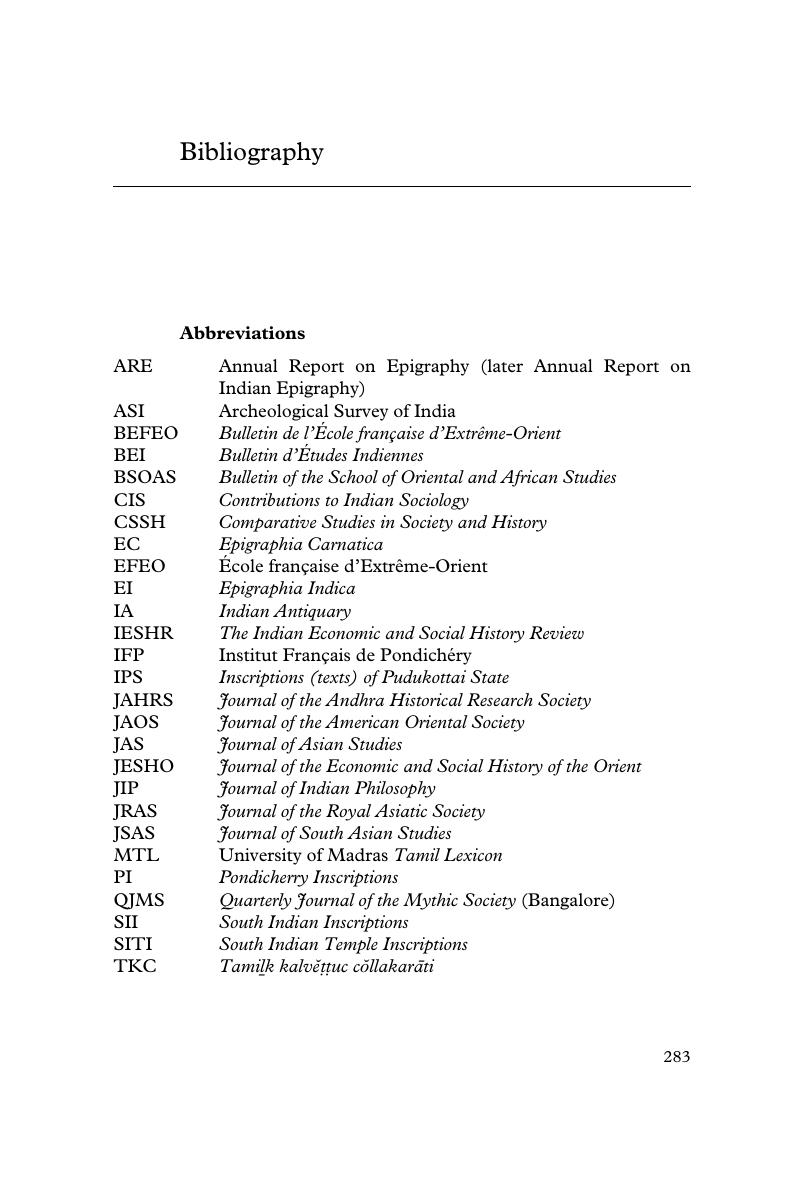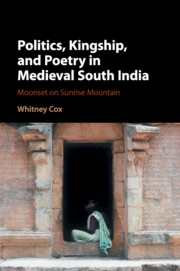Book contents
- Politics, Kingship, and Poetry in Medieval South India
- Politics, Kingship, and Poetry in Medieval South India
- Copyright page
- Dedication
- Contents
- Figures
- Tables
- Book part
- Note on the Transliteration and Presentation of Texts
- Introduction
- 1 Rājiga, before 1070
- 2 Rājendracoḷa, June 1070–May 1074
- 3 Kulottuṅga
- 4 The Emperor of the Three Worlds and the Lord of the Little Shrine
- Conclusions
- Notes
- Bibliography
- Index
- References
Bibliography
Published online by Cambridge University Press: 27 October 2016
- Politics, Kingship, and Poetry in Medieval South India
- Politics, Kingship, and Poetry in Medieval South India
- Copyright page
- Dedication
- Contents
- Figures
- Tables
- Book part
- Note on the Transliteration and Presentation of Texts
- Introduction
- 1 Rājiga, before 1070
- 2 Rājendracoḷa, June 1070–May 1074
- 3 Kulottuṅga
- 4 The Emperor of the Three Worlds and the Lord of the Little Shrine
- Conclusions
- Notes
- Bibliography
- Index
- References
Summary

- Type
- Chapter
- Information
- Politics, Kingship, and Poetry in Medieval South IndiaMoonset on Sunrise Mountain, pp. 283 - 296Publisher: Cambridge University PressPrint publication year: 2016



